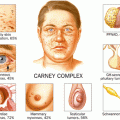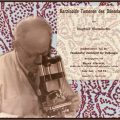Robert James Graves. (Etching by Sherman & Smith. Image from the History of Medicine (NLM))
As a lecturer Professor Graves was endowed with peculiar capabilities. To a remarkable person he added great powers of arresting attention in the very outset of his discourse, which by an almost startling impressiveness he maintained throughout; his ideas were conveyed in a bold, fluent and classic style; in his language he was always forcible and elegant, and though frequently eloquent he never sacrificed his subject for flowers of rhetoric, or lost sight of his text in the froth of metaphor; for whether discussing the investigations of others, or detailing the results of his own enquiries, he ever manifested the same critical acumen, the same powers of the same piercing analysis. (William Wilde, father of Oscar Wilde, editor of the Dublin University Magazine [1])
This portrait of Robert James Graves by his friend and former student William Wilde was published in 1839, when Graves was 44 years old. His words reflect the unique abilities of Graves as an educator. Graves was a masterful teacher and lecturer, which were his greatest contributions to medicine. Ironically, the syndrome that bears his name was but a fragment of his medical career .
Graves’ Disease
It was in 1835 that Robert Graves shared his clinical observations of three patients with toxic goiter during a lecture at Meath Hospital . The article, “Newly observed affection of the thyroid gland in females” was transcribed from his lecture and published in the London Medical and Surgical Journal in May 1835 [2]. His classical description was, “I have lately seen three cases of violent and long continued palpitations in females, in each of which the same peculiarity presented itself, viz. enlargement of the thyroid gland; the size of this gland, at all times considerably greater than natural, was subject to remarkable variations in every one of these patients. When the palpitations were violent the gland used notably to swell and become distended, having all the appearance of being increased in size in consequence of an interstitial and sudden effusion of fluid into its substance. The swelling immediately began to subside as the violence of the paroxysm of palpitation decreased, and during the intervals the size of the gland remained stationary. Its increase of size and the variation to which it was liable had attracted forcibly the attention both of the patients and of their friends. There was not the slightest evidence of anything like the inflammation of the gland.” One patient was described as having audible heartbeats as far as 4 ft. away from her chest. The sudden enlargement of the thyroid was reported to be associated with a feeling of suffocation. Graves described these attacks as a “hysteric paroxysm or hysterical fit,” as palpitations of the heart were common in hysterical and nervous females. Eye manifestations were described in a 20-year-old woman. “The eyes assumed a singular appearance, for the eyeballs were apparently enlarged, so that when she slept or tried to shut her eyes, the lids were incapable of closing. When the eyes were open, the white sclerotic could be seen, to a breadth of several lines, all round the cornea.”
Robert Graves’ description was not the first of exophthalmic goiter , Caleb Hillier Parry from Bath, England, described the syndrome in 1786, but it was not documented on until a posthumous and unpublished collection of his writings were completed in 1825, 10 years earlier than Graves’ publication [3]. Guiseppe Flajani, an Italian surgeon and anatomist, reported on a patient with exophthalmos and goiter in 1802 [4]. In Germany, von Basedow reported on exophthalmic goiter in 1840 [5]. In most of Europe, this syndrome is referred to as von Basedow’s disease. The USA, Britain, and other English-speaking areas will refer to it as Graves’ disease . This has been attributed to Armand Trousseau (Trousseaus’ sign in hypocalcemia), who published in London a textbook, Clinique Medicale de L’Hotel Dieu de Paris, that had a chapter, “Du Goitre Exophthalmique, ou Maladie de Graves’.” It is a mystery why Caleb Parry was not given full credit despite it being given to him in Sir William Osler’s Textbook of Medicine, the gold standard text in English-speaking countries for many years.
Stay updated, free articles. Join our Telegram channel

Full access? Get Clinical Tree








